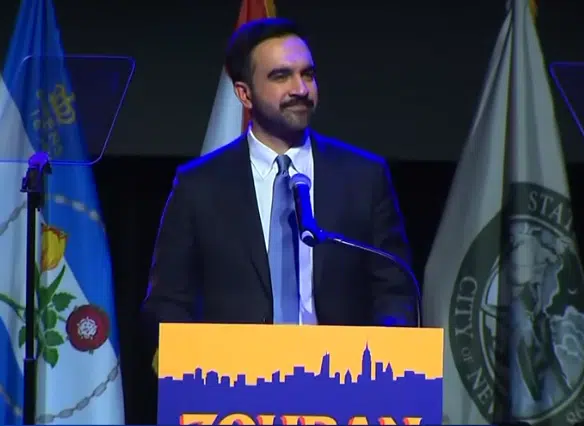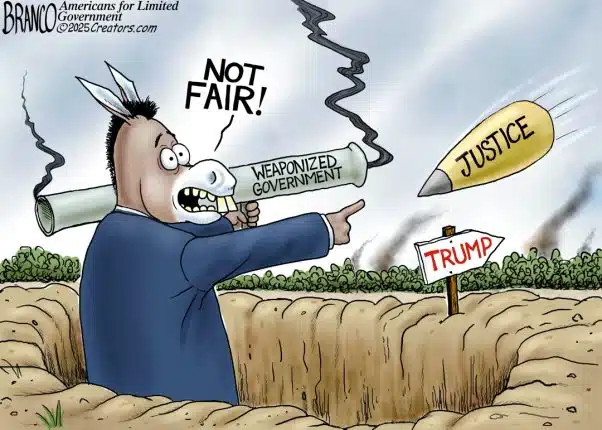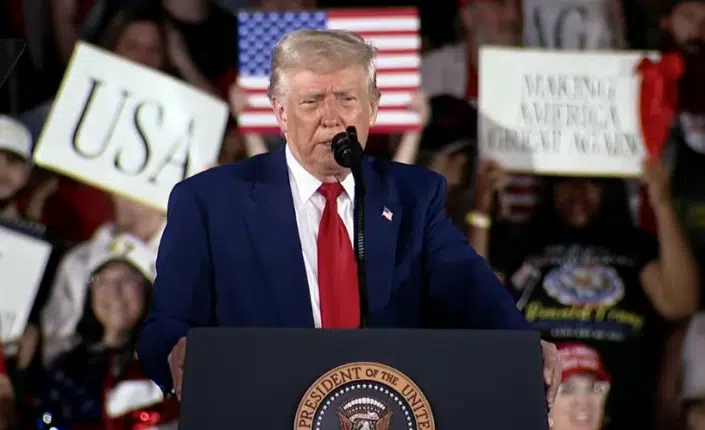
House Speaker Mike Johnson (R-La.) at the America First Policy Institute on Sept. 17 unveiled part of the House Republican legislative agenda should former President Donald Trump prevail in the 2024 election versus Vice President Kamala Harris and Congressional Republicans retain the House and win the Senate (for example by picking up seats in West Virginia and Montana) and, once again, all eyes are on the budget as the mechanism for enacting much of it.
In 2017, Republicans with control of the House and Senate were able to pass through budget reconciliation temporary tax cuts that end in 2025, repealing the Obamacare individual mandate and allowing oil drilling in Arctic National Wildlife Refuge, taking advantage of provisions of U.S. budget law that allow changes to spending and revenue to occur on a simple majority in the Senate.
And in 2025, should Trump and Congressional Republicans win the election, barring a bipartisan epiphany among Democrats to complete projects like the border wall, repeal distorting green subsidies or make tax relief permanent, they will almost certainly have to resort to budget reconciliation once again to get much of anything done. As construction projects and tax cuts directly impact the budget, it is appropriate to include them in the budget.
Other provisions Johnson is eying include undoing the Biden-Harris “big government socialist experiment” and regulatory agenda and what remains of the green subsidies from the Inflation Reduction Act, as Johnson outlined, stating, “When we retake control of government, we’re going to roll back the Green New Deal regulations and put America back in a place of energy dominance… We will cut the wasteful green New Deal spending in the Democrats’ so-called Inflation Reduction Act that is costing twice as much as it was advertised and is sending our taxpayer dollars to China.”
In 2008, the U.S. total electric power industry was producing 4.119 billion megawatt hours (MWh), including 1.985 billion MWh from coal, 882.4 million MWh from natural gas and 56.2 million MWh from solar and wind combined, data from the U.S. Energy Information Administration (EIA) shows.
And in 2022, total electricity output was up to 4.230 billion MWh, including 831 million MWh from coal, 1.687 billion MWh from natural gas and 578 million MWh from solar and wind combined.
In the meantime, the U.S. population has increased by more than 30 million to 334.9 million, a 10.1 percent increase. But overall electricity generation has only increased by 2.6 percent. Demand is up, but electricity production has not kept up—by design—and so prices have skyrocketed, with electricity prices up 42 percent since Jan. 2009 since former President Barack Obama embarked upon this path. The American people are finally feeling the impacts of a policy that Obama promised in 2008 would cause prices to “skyrocket”: “Under my plan… electricity rates would necessarily skyrocket.”
Johnson also said he will drain the administrative state swamp by terminating federal employees: “We’re going to reduce the size of the federal workforce, and we’re going to root out the hundreds of thousands of non-essential jobs that exist throughout the federal bureaucracy.”
The spending and the workforce reductions are simple enough, since the tax credits and other subsidies in the Inflation Reduction Act, and reducing the number of full-time equivalents are straight budget cuts, ripe for use in a budget bill.
The key is that the provisions used in budget reconciliation need have an impact on deficit — for example, provisions that add to the deficit need to be offset by reductions elsewhere. And with the so-called Byrd Rule that allows a Senator to raise a point of order under federal law “against material extraneous to the instructions to a committee which is contained in any title or provision of the bill or resolution or offered as an amendment to the bill or resolution…” not everything Republicans might like to pass will past muster with the Senate parliamentarian in the budget bill if it has no budgetary impact.
All other legislation with some exceptions like trade bills when trade authority is activated would require the 60-vote supermajority to overcome a Senate filibuster, including appropriations bills, debt ceilings and continuing resolutions, that is, the other so-called “must-pass” legislation that policy riders are often attached to.
Although it is worth noting that pre-Byrd Rule budget bills did often include policy riders, for example the 1981-1982 Budget Reconciliation Act, which included multiple “None of the funds shall be used…” provisions to defund certain regulatory and other actions.
That could provide a potential roadblock when it comes to rolling back regulations, although a Trump administration could do so via the Administrative Procedures Act and certainly would if elected. The advantage of Congress stepping into the fray would be to provide additional legal impetus for doing so if Congress explicitly defunded the implementation of certain regulations, removing arguments in the judicial branch that a regulatory rescission exceeded Congress’ express will in some way, thereby expediting the inevitable court cases because Congress had acted.
On the other hand, the points of order if sustained by the Chair could simply be overridden in the same manner that judicial and executive appointments are confirmed in contravention of the standing rules of the Senate for invoking cloture with a three-fifths majority, but with a consequence insofar as “extraneous” matters being included in budget bills would be viewed similarly to invoking the nuclear option on appointments or legislation. So what to do?
In that context, budget reconciliation then becomes somewhat of an incomplete tool if defunding regulations is not viewed as a viable option. That is, unless the costs of implementing regulations were included in the cost of removing the full-time equivalents by calculating the costs of enforcing the regulations to be defunded, how much money is saved by not implementing them and therefore how many full-time equivalents can be eliminated, for example, by undoing the Biden-Harris Clean Energy Plan.
It’s worth a shot. Generally, the first year or so of a new administration is when the greatest legislative measures are enacted. When the other mechanisms are considered — appropriations bills, continuing resolutions, debt ceilings and omnibus spending bills — those will be highly contested by the opposition and still require 60-vote thresholds to enact.
Certainly, there is nothing that prevents the House of Representatives from passing a budget bill under its own rules that includes not just tax cuts or border walls — those should be included — but also the regulatory defunds that would normally be included in appropriations bills. Be as aggressive as possible. When the same bill comes up in the Senate under reconciliation, Senators will inevitably raise the points of order, but with documented cost-savings it would force the issue. Show the savings involved with defunding department and agency enforcement of regulations and removing the no-longer-needed regulators and put it to the test. As former President Trump is fond of saying, what have you got to lose?
Robert Romano is the Vice President of Public Policy at Americans for Limited Government.






